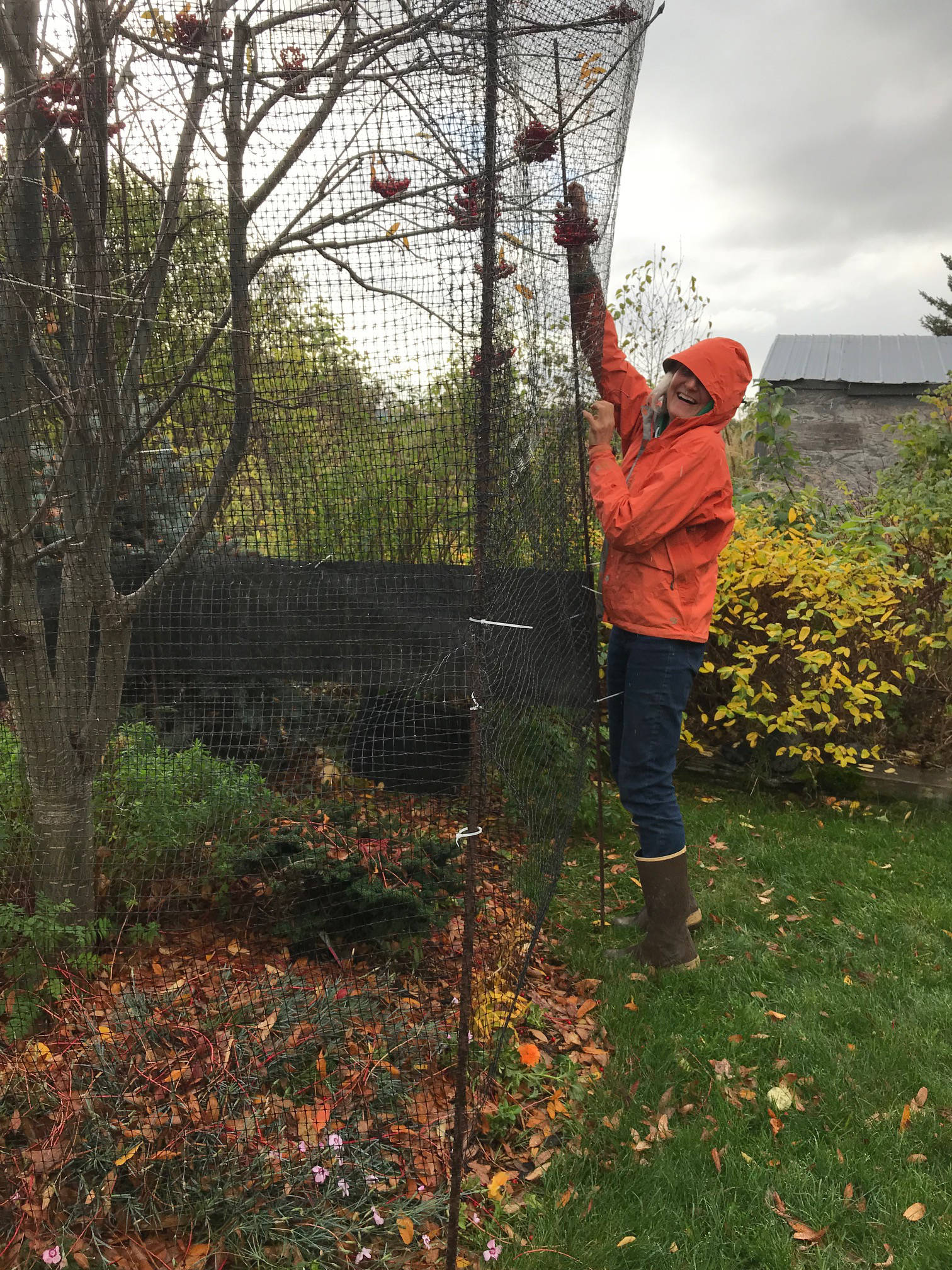Oh my, where to start? This mellow fall is luxurious as far as time enough to do everything that needs to be done before the real weather starts. If there is any real weather. So here goes …
The ground certainly is wet enough for you to easily edge your beds. I don’t use any edging material. I’ve tried it but it just pops up with frost heaves, or I can’t dig it down far enough because of tree roots and there it is, sticking up and looking decidedly artificial. Instead I take my sharp spade and dig a little trench. This trench enables the wheel of the lawn mower to drop into it, effectively trimming the bed while mowing. Excellent. I do believe that grass is our most invasive species. By cutting in the edge with your spade you will be cutting the roots and deterring its inevitable progression. This is usually a spring job, but with this mild weather why not get a jump start?
While you are out there (probably wearing rain gear) you can get some weeding done. Once again, I have found more grass in the perennial beds this fall than anything else. Get after it now. Plus the beds will look lovely and methinks we will be looking at them for a good long time this fall — might as well be weed free.
There is a hedge of bleeding hearts along the north side of the house that need support. They spill over onto the boardwalk so a little help containing their exuberance is in order. I use pea fencing to do the job but these will need to be pulled sooner rather than later so they don’t freeze in, if it ever freezes. That leaves the almost spent foliage of the bleeding hearts to fend for themselves. Once they are completely spent I will push them over; that way they mulch themselves. It’s been working for 20 years so I’m not about to change tactics. This will be the fate of all the perennials still standing. There are a few that I like to leave so the beds don’t look barren but, for the most part, I bend them over and let them take care of themselves.
The foliage on the peonies is looking strong, and is still green, not bad. Once they decide to call it quits I will cut it down and either take it to the dump or burn it. Do not compost your peony foliage, do not leave it in situ. It could carry botrytis, a fungus that can wreak havoc with your beauties. Better safe than sorry.
John and Beth Bauer, friends in Anchorage, have a very strong rosemary plant thriving in their cold frame. They don’t want to bring it in and will be experimenting with leaving it where it is. I suggested that, with the massive abundance of leaves in their neighborhood, to pile some up around the plant as a little protection. We’ll see what happens.
Which brings me, conveniently, to leaves. We leave ours on the ground, no raking around here. John runs the mower over them and they in turn will feed the grass and the tree from which they fell. He’ll gather a barrow full from under the alders and add that to the compost pile. I don’t like to use them for mulch. I’ve tried that and they formed a nasty mat that didn’t help the situation at all. If you have tender perennials that need mulch (I hope you don’t) try using spruce boughs. These have been the most successful material yet. But wait for the ground to freeze or get covered with snow, whichever comes first. The garlic bed will definitely get a blanket of boughs.
If you still have herbs in your vegetable garden you might want to think about potting them up to bring inside. Do a reverse harden off (introduce them gradually to indoor life) and inspect them for aphids. But if you do find yourself buying herbs at the grocery store this winter, stick a few pieces in a glass of water on the window sill — they will probably root — then pot them. There you have it.
Jeanne Walker has been doing battle with her horseradish patch. She thought she had beat them into submission last year. No. This root is one nasty plant to eradicate. I don’t have any of this, knowing what a bully it is. But —- I wanted some horseradish. So, Jeanne brought over some roots to be grated (oh, the tears), added white vinegar with a little salt, jarred it, put it in the refrigerator and hopefully I will have just enough horseradish to see us through the winter. Have you noticed the list of ingredients on a store bought jar of horseradish? Take a look. It’s actually fascinating. I put the trimmings in the trash, not the compost, for fear of it turning into a monster and dominating my little garden. Same with mint. I have just enough in a pot on the greenhouse deck where it behaves quite nicely.
Think about cleaning up your tools. Use a wire brush on the metal part, sandpaper on wooden handles followed by a light coat of linseed oil. Hang them under the eaves or in a tool shed. This should see them through the worst of what is to come.
Rosemary Fitzpatrick is a longtime Homer gardener and has been writing Kachemak Gardener since 1990.


